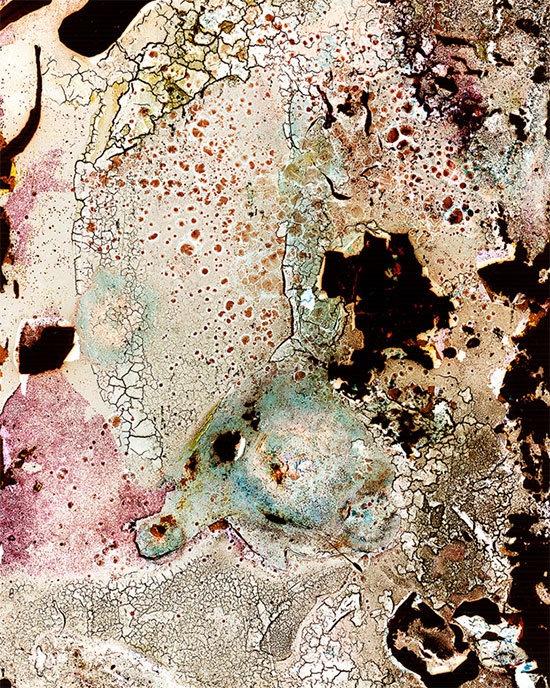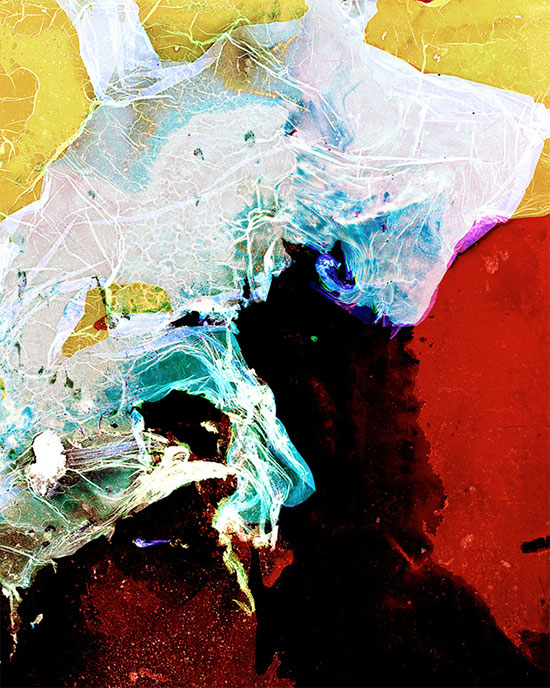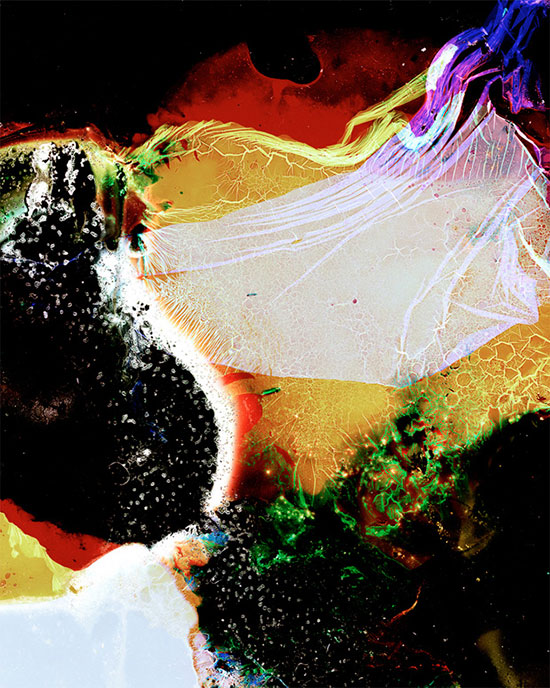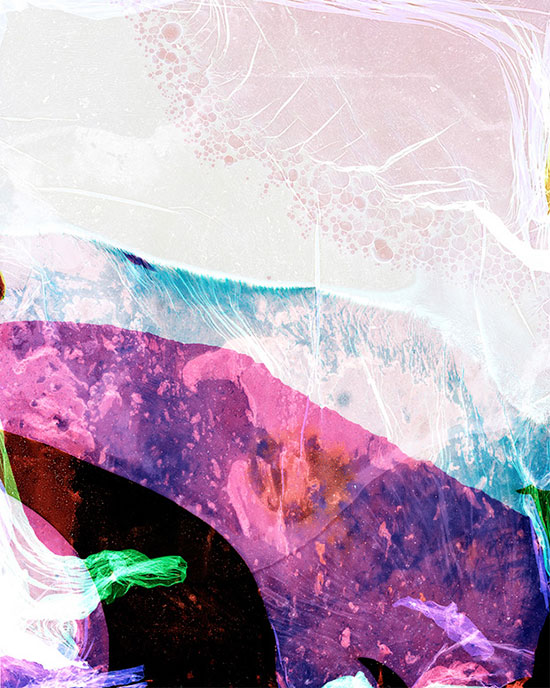| Steve Back |
| 07.01.13 | No Comments |
I love these aerial photos of Kalbarri, Western Australia’s Hutt Lagoon, the world’s largest Beta Carotene farm by Australian engineer turned photographer Steve Back.









All images by www.stevebackart.com

| Steve Back |
| 07.01.13 | No Comments |
I love these aerial photos of Kalbarri, Western Australia’s Hutt Lagoon, the world’s largest Beta Carotene farm by Australian engineer turned photographer Steve Back.









All images by www.stevebackart.com
| Erno-Erik Raitanen’s Bacteriograms |
| 06.20.13 | No Comments |
“Colorful and unusual patterns pictures are what photographer Erno-Erik Raitanen calls self-portraits. The pictures, which Raitanen says are more like photograms, involve no camera, some photographic film, and bacteria.
The series, called Bacteriograms, is a display of Raitanen’s own body bacteria cultivated on the gelatin surface of film negatives, much like bacteria is grown in Petri dishes in a laboratory setting.”
from petapixel.com







| Yuji Obata |
| 01.30.12 | No Comments |



Yuji Obata. Homage to Wilson A. Bentley 2005 – 2006
Yuji Obata’s stunning snow photographs are currently on view at Danziger in NYC. They took my breath away.
| Face Blindness |
| 12.27.10 | No Comments |
Dr. Oliver Sacks explores prosopagnosia, or face blindness. The audio interview fascinating.
Read more and listen on the The New Yorker web site.
| Extreme Ice Survey |
| 05.14.09 | No Comments |
James Balog and the Extreme Ice Survey were featured in a one-hour documentary on NOVA/PBS on March 24, 2009. The film follows James as he photographs spectacular landscapes in Alaska, Greenland, and Iceland and, with his team, collects images from his time-lapse cameras.
These photo are all stunning. It was hard for me to just pick a few for my blog. I can’t wait to see the documentary later this month. Be sure to check out the gallery on the site.





| A World of Ants |
| 04.28.09 | No Comments |

Photo: Alex Wild, NY Times
view gallery and article in the NY Times
| Eye candy of the day: Nikon Small World Photo Competition |
| 10.16.08 | No Comments |

Jose Almodovar, Diatoms (100X)

Pedro Barrios-Perez, Oxidation of III-V semiconductor through pin-hole (200X)

Charles Krebs,Wing scales of Urania riphaeus (Sunset moth) (100X)

| my Sea Turtles Babies Photos |
| 09.12.08 | No Comments |
One morning we work up at 5am and headed to the beach in Cirali,
Turkey. We met up with a scientist who helps the sea turtles get
through the sand and make their way to the sea after they hatched.
He let us watch the process.
It was an absolutely beautiful sight.


| Spore |
| 09.04.08 | No Comments |
I am not really interested in video games but this sounds really cool.
As an intelligent romp through the sometimes contradictory realms of science, mythology, religion and hope about the universe around us, Spore both provokes and amuses. And as an agent of creativity it is a landmark. Never before have everyday people been given such extensive tools to create their digital alter ego.
-NY Times review of a new video game called Spore

| I want to go to the Insectarium |
| 08.22.08 | No Comments |
Audubon Insectarium opens in New Orleans, NY Times Article

Insect photograph by Seze Devres taken at the Reading Museum in Pennsylvania, 2005
| Princeton’s Art of Science Competition |
| 08.13.08 | No Comments |


| The Magical Surface of the Soap Bubble |
| 06.13.08 | No Comments |

Photographer Jason Tozer was asked to take some pictures of bubbles by Creative Review magazine, using the new Sony Alpha camera.
www.creativereview.co.uk/crblog/planet-tozer/
| Human egg makes accidental debut on camera |
| 06.11.08 | No Comments |
Wow this is amazing link
| Striped Icebergs |
| 05.28.08 | No Comments |
Icebergs in the Antarctic area sometimes have stripes, formed by layers of snow that react to different conditions. Blue stripes are often created when a crevice in the ice sheet fills up with melt water and freezes so quickly that no bubbles form. When an iceberg falls into the sea, a layer of salty seawater can freeze to the underside. If this is rich in algae, it can form a green stripe. Brown, black and yellow lines are caused by sediment, picked up when the ice sheet grinds downhill towards the sea.


Thanks to Bryan’s dad for sending me this one, sorry I can’t find a photo credit.
| Goodnight and Farewell, to the Creator of Awakened Dreamtime |
| 04.30.08 | No Comments |

| Eye Candy |
| 03.26.08 | No Comments |
| Visual Inspiration Explosion! |
| 03.26.08 | No Comments |
www.spacecollective.org/gallery
| Olivia Judson’s article on mutations in nature |
| 03.26.08 | No Comments |
The crab spider Thomisus onustus. Some individuals are a most unspiderly color: they are hot pink. This allows them to hide in hot pink flowers — and ambush unwary bees. Other individuals are yellow, and hide in yellow flowers. Even more surprising, their colors are not fixed: move a pink spider to a yellow flower, and she can change her color to match.
– Olivia Judson
March 25, 2008
Evolving the Wow! Factor
NY TIMES
This article and her blog are really interesting and well worth reading.